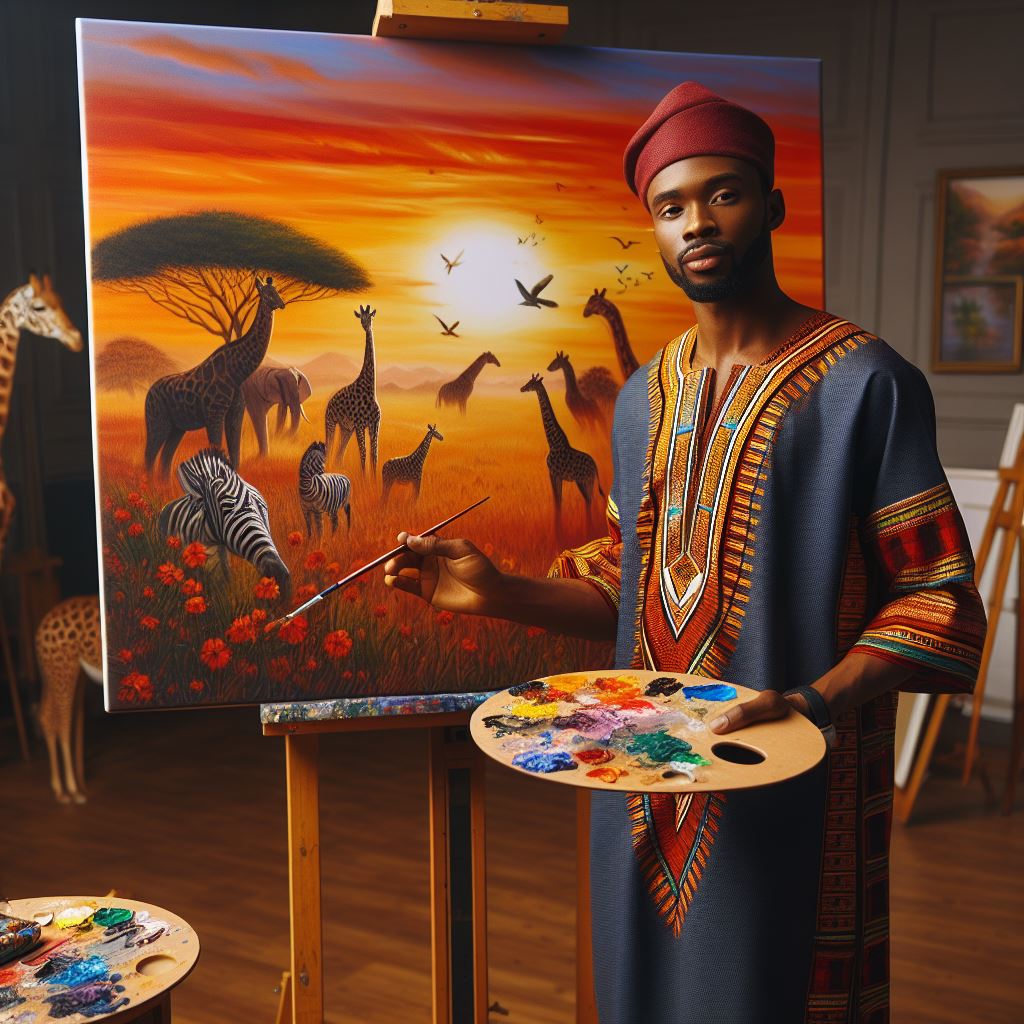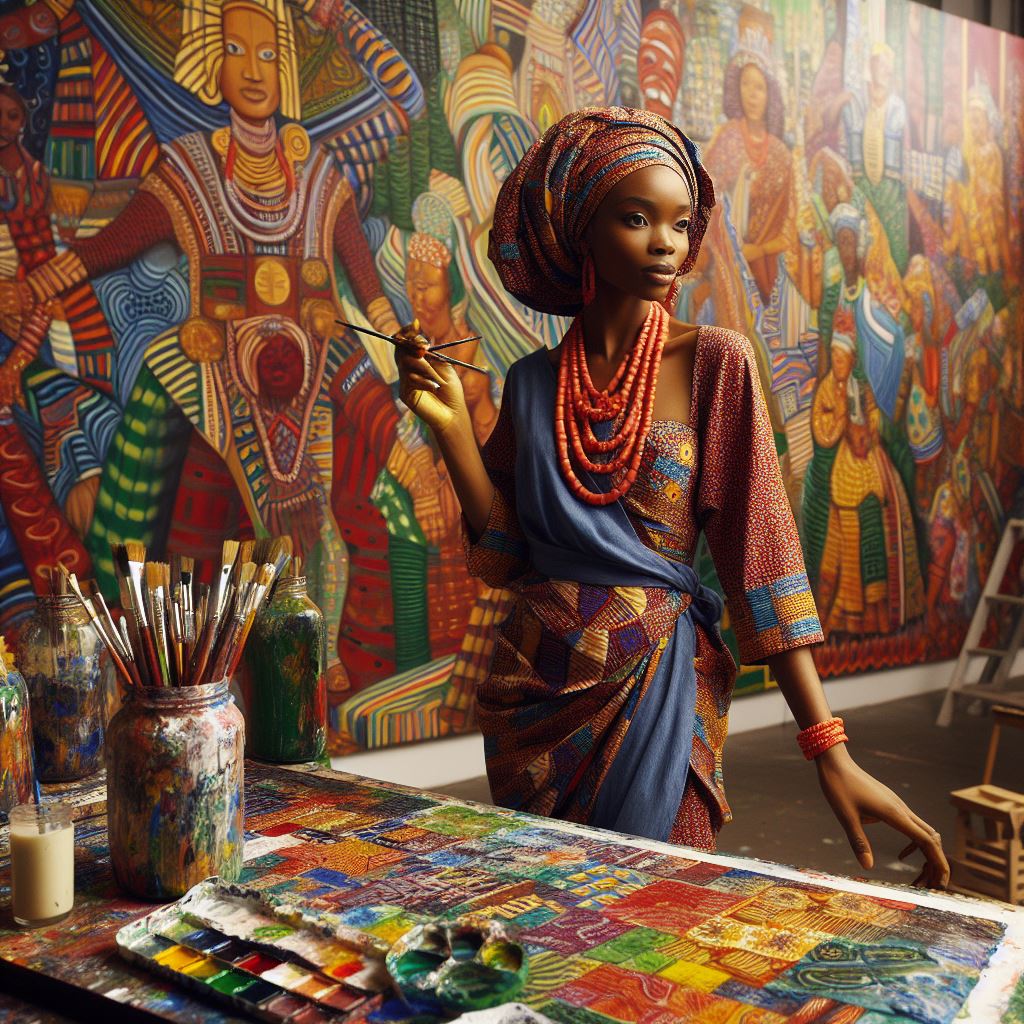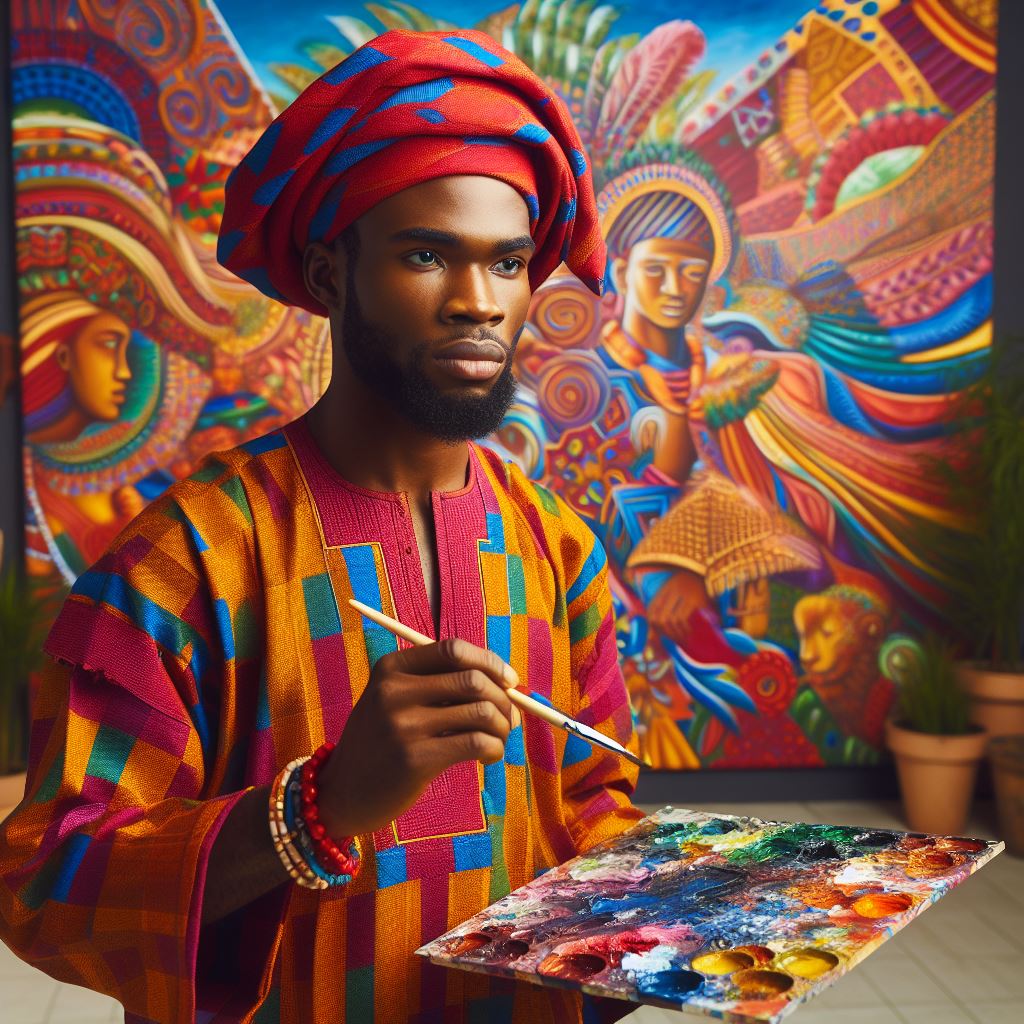Introduction
Embark on a journey into the captivating realm of Fine and Applied Art courses, where creativity knows no bounds.
Fine and Applied Art encompasses a rich tapestry of creative disciplines, from traditional painting and sculpture to cutting-edge multimedia design.
At the heart of Fine and Applied Art lies the exploration of aesthetic principles and the cultivation of artistic skills.
Through hands-on experience and academic inquiry, students delve into the intricacies of form, color, texture, and composition.
Studying Fine and Applied Art is not merely about mastering techniques; it’s about unlocking the boundless potential of human expression.
It offers a platform for self-discovery, innovation, and cultural exchange.
Moreover, Fine and Applied Art plays a vital role in shaping our understanding of the world around us, reflecting societal values, historical narratives, and individual perspectives.
By studying Fine and Applied Art, students gain insights into diverse cultures, traditions, and contemporary issues.
Join us as we unravel the multifaceted world of Fine and Applied Art courses and discover the transformative power of creativity.
Different Areas of Study within Fine and Applied Art Course
When you enroll in Fine and Applied Art Courses, you may have the opportunity to specialize in various areas of study.
These disciplines allow you to explore your creativity and develop skills in different forms of art.
Here are some of the different areas of study within Fine and Applied Art Courses:
Painting
In a painting course, you will learn about different painting techniques, color theory, and composition.
You will have the chance to experiment with various mediums such as acrylics, oils, and watercolors.
Sculpture
Sculpture courses focus on creating three-dimensional artworks using materials such as clay, wood, metal, or stone.
You will explore different sculpting techniques and learn how to bring your ideas to life in physical form.
Photography
Photography courses teach you how to capture and manipulate images using cameras and digital editing software.
You will learn about lighting, composition, and how to create visually impactful photographs.
Graphic Design
Graphic design courses focus on creating visual content for various purposes such as branding, advertising, and digital media.
You will learn about typography, layout design, and digital illustration techniques.
Fashion Design
Fashion design courses cover the creation of garments, accessories, and fashion collections.
You will learn about fashion history, textiles, pattern making, and sewing techniques to bring your designs to life.
Ceramics
In ceramics courses, you will work with clay to create functional or decorative objects such as pottery, sculptures, or tiles.
You will learn about hand-building techniques, wheel-throwing, glazing, and firing processes.
Interior Design
Interior design courses focus on creating aesthetically pleasing and functional interior spaces.
You will learn about space planning, color theory, furniture design, lighting, and materials selection to transform interior environments.
Each of these areas of study offers a unique learning experience and the opportunity to explore different artistic mediums and techniques.
Whether you are interested in painting, sculpture, photography, graphic design, fashion design, ceramics, or interior design, Fine and Applied Art Courses provide a platform for you to unleash your creativity and develop your skills as an artist.
Read: Digital Media Trends in Communication Arts
Skills and Techniques Taught in Fine and Applied Art Courses
When you enroll in a fine and applied art course, you can expect to learn a wide range of skills and techniques that will help you develop as an artist.
These courses are designed to provide you with a solid foundation in various aspects of art, and here are some of the key skills and techniques you can expect to learn:
Drawing Skills
- Understanding of line, form, shape, texture, and perspective
- Technical skills in sketching, shading, and rendering
- Exploration of different drawing mediums such as pencils, charcoal, and ink
Color Theory
- Understanding the color wheel and color schemes
- Practice in mixing and blending colors effectively
- Exploration of the psychological effects of color in art
Composition
- Learning how to arrange elements within a piece of art
- Understanding the principles of balance, rhythm, and harmony
- Experimenting with different compositional techniques
Art History
- Studying the major art movements and styles throughout history
- Exploring the work of famous artists and their contributions to the art world
- Understanding the cultural and historical context of art pieces
Technical Skills in Various Mediums
- Practice in working with mediums such as painting, sculpture, ceramics, and printmaking
- Learning techniques specific to each medium, such as brushwork in painting or carving in sculpture
- Experimenting with different tools and materials to create art
Creative Problem-Solving
- Developing the ability to think outside the box and find innovative solutions to artistic challenges
- Experimenting with unconventional techniques and approaches to art-making
- Encouraging creative risk-taking and exploration in your artistic practice
Overall, fine and applied art courses provide a comprehensive education in artistic skills and techniques that will help you grow as an artist and unlock your creative potential.
By mastering these skills, you will be well-equipped to pursue a career in the arts or simply enjoy the process of creating art as a form of self-expression and personal fulfillment.
Read: Communication Arts: Job Prospects and Salaries
Career Opportunities for Fine and Applied Art Graduates
After completing a fine or applied art course, graduates have a variety of career opportunities to pursue. Let’s explore some of the options:
Artist
Many fine and applied art graduates choose to pursue careers as professional artists. They may create paintings, sculptures, or other works of art to sell or exhibit in galleries.
Designer
Graduates with a background in fine or applied art may work as designers, creating visual concepts for products, advertisements, or websites. They use their artistic skills to communicate ideas visually.
Art teacher
Some graduates choose to become art teachers, sharing their knowledge and skills with students of all ages.
They may work in schools, community centers, or private art studios.
Illustrator
Illustrators create visual images for books, magazines, advertisements, and other media. Fine and applied art graduates with strong drawing and design skills may excel in this field.
Gallery curator
Gallery curators are responsible for selecting and presenting works of art in galleries or museums.
They may work with artists, collectors, and other professionals to create exhibitions.
Art therapist
Art therapists use art-making as a form of therapy to help clients explore and express their emotions. Fine and applied art graduates with an interest in psychology may find this career rewarding.
Art director
Art directors are responsible for overseeing the visual elements of a project, such as a publication, advertisement, or film.
They work with a team of artists and designers to bring concepts to life.
Overall, fine and applied art graduates have a wide range of career opportunities available to them.
Whether they choose to pursue a traditional art-related career or explore a new and innovative path, their artistic skills and creative thinking will serve them well in the professional world.
Read: Impact of Communication Arts on Nigerian Media

Uncover the Details: How Political Studies Shape Nigerian Electoral Processes
Discover More: Mass Communication Project Ideas for Nigerian Students
Uncover the Details: Comparing English Language and Communication Degrees
Learn More: Anthropological Approaches in African and Asian Studies
Challenges of Studying Fine and Applied Art
Fine and Applied Art courses offer a dynamic and immersive learning experience that goes beyond the classroom.
Long Hours of Practice and Studio Work
Students can expect to spend long hours honing their craft through practice and studio work.
From mastering intricate brush strokes to sculpting intricate forms, dedication and perseverance are key to success.
A high level of Creativity Required
Creativity is at the core of Fine and Applied Art courses.
Students are encouraged to think outside the box, experiment with different mediums, and push the boundaries of traditional artistic techniques.
Opportunities for Self-Expression and Exploration
Fine and Applied Art courses provide ample opportunities for self-expression and exploration.
Whether it’s through painting, sculpture, or digital media, students have the freedom to unleash their creativity and explore their artistic voice.
Potential for Networking and Collaboration
Fine and Applied Art courses offer a vibrant community of artists, instructors, and industry professionals.
Through networking events, workshops, and collaborative projects, students can build valuable connections and expand their professional network.
Chance to Make a Significant Impact on Society Through Art
Art has the power to inspire, provoke, and challenge societal norms.
Fine and Applied Art courses provide students with the platform to address pressing social issues, spark meaningful conversations, and make a positive impact on society through their art.
Therefore, Fine and Applied Art courses offer a rich and rewarding educational experience.
From intensive studio work to collaborative projects and networking opportunities, students can expect to develop their artistic skills, express their creativity, and contribute to the cultural landscape in meaningful ways.
Read: Internship Opportunities for Communication Arts Students
Learn More: Challenges Facing History & Strategic Studies in Nigeria
Uncover the Details: Best Editing Software for Nigerian Filmmakers
Requirements for Admission into Fine and Applied Art Courses
When it comes to pursuing Fine and Applied Art courses, there are certain requirements that aspiring students need to meet in order to gain admission into these programs.
The admission process for these courses typically involves a combination of portfolio submission, entrance examination, interview process, academic qualifications, and letters of recommendation.
Portfolio Submission
One of the key requirements for admission into Fine and Applied Art courses is the submission of a portfolio.
This portfolio should showcase a selection of the student’s artwork, which will be used to assess their skills and creativity in the field.
Transform Your Career with Expert Guidance
Get personalized mentorship consulting that’s tailored to your unique path. Our expert advice is actionable and exclusive.
Get StartedEntrance Examination
In addition to submitting a portfolio, applicants may also be required to take an entrance examination as part of the admission process.
This examination may test their knowledge of art history, as well as their technical skills in various mediums.
Interview Process
Another common requirement for admission into Fine and Applied Art courses is the interview process.
During this interview, applicants may be asked about their artistic influences, career goals, and reasons for pursuing a career in the arts.
Academic Qualifications
Most institutions offering Fine and Applied Art courses also require applicants to meet certain academic qualifications.
This may include a high school diploma or equivalent, as well as specific prerequisites in art-related subjects.
Letter of Recommendation
Lastly, applicants may be asked to submit letters of recommendation as part of their application.
These letters should come from teachers, mentors, or other professionals who can attest to the applicant’s skills and dedication to their craft.
Meeting these requirements is essential for aspiring artists who wish to pursue a career in Fine and Applied Art.
By showcasing their talent, academic achievements, and commitment to their craft, students can increase their chances of gaining admission into the program of their choice.
Uncover the Details: Impact of Philosophy on Nigerian Society
You Might Also Like: Role of Government in Promoting Nigerian Arts
Explore Further: Artistic Inspiration from Nigerian Landscapes
Delve into the Subject: Future of Christian Religious Studies in Nigeria
Conclusion
Lastly, Fine and Applied Art courses offer a unique blend of creativity and skill development.
Students can expect to engage in a variety of mediums such as painting, sculpture, ceramics, and digital art.
Throughout the courses, students will have the opportunity to experiment with different techniques and styles, allowing them to discover their own artistic voice and vision.
Aspiring Fine and Applied Art students should be prepared to embrace challenges, seek inspiration from their surroundings, and push the boundaries of conventional art forms.
Remember, the journey of an artist is a continuous learning process, so be open to feedback, critique, and growth.
Stay curious, passionate, and dedicated to your craft.
For further information and resources on Fine and Applied Art courses, consider reaching out to art institutions, attending art fairs, and exploring online art communities and forums.
Ultimately, pursuing a career in Fine and Applied Art requires determination, perseverance, and a willingness to explore the depths of your creative potential.
Embrace the journey, and let your imagination soar!




